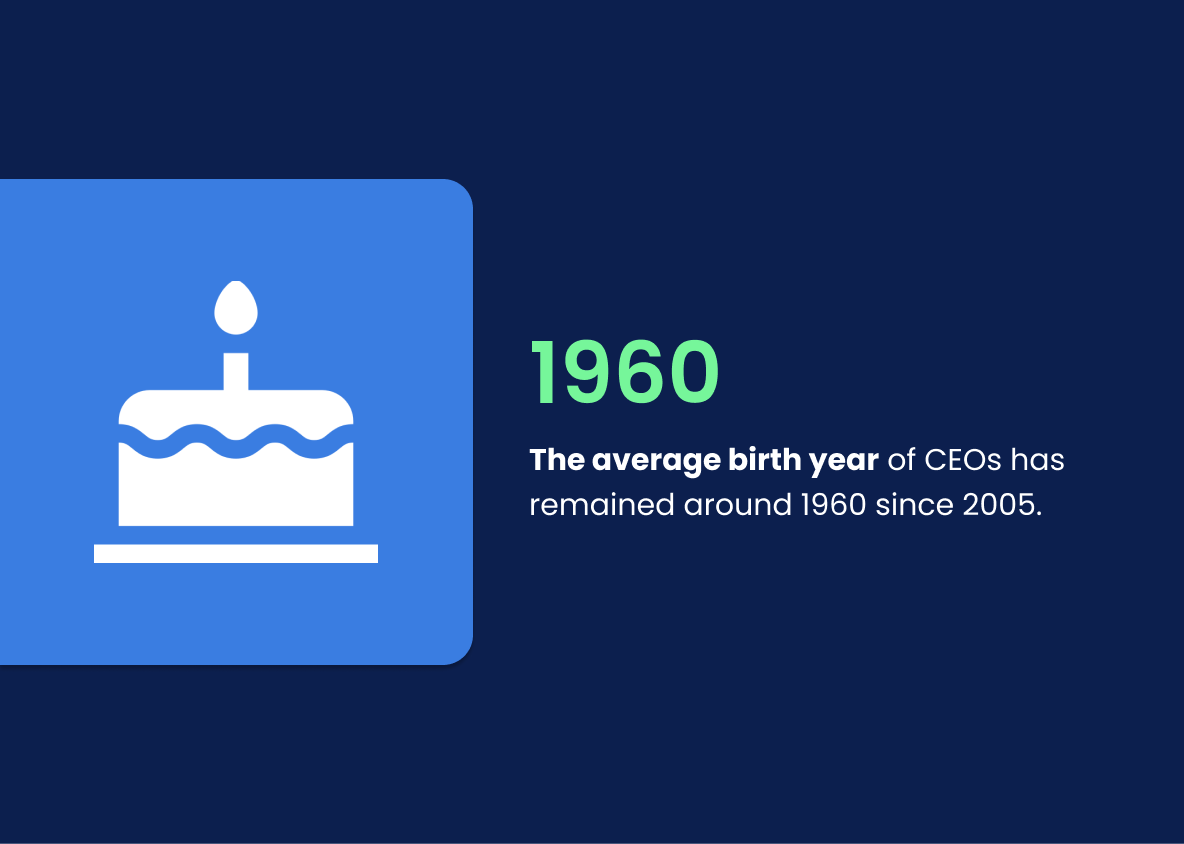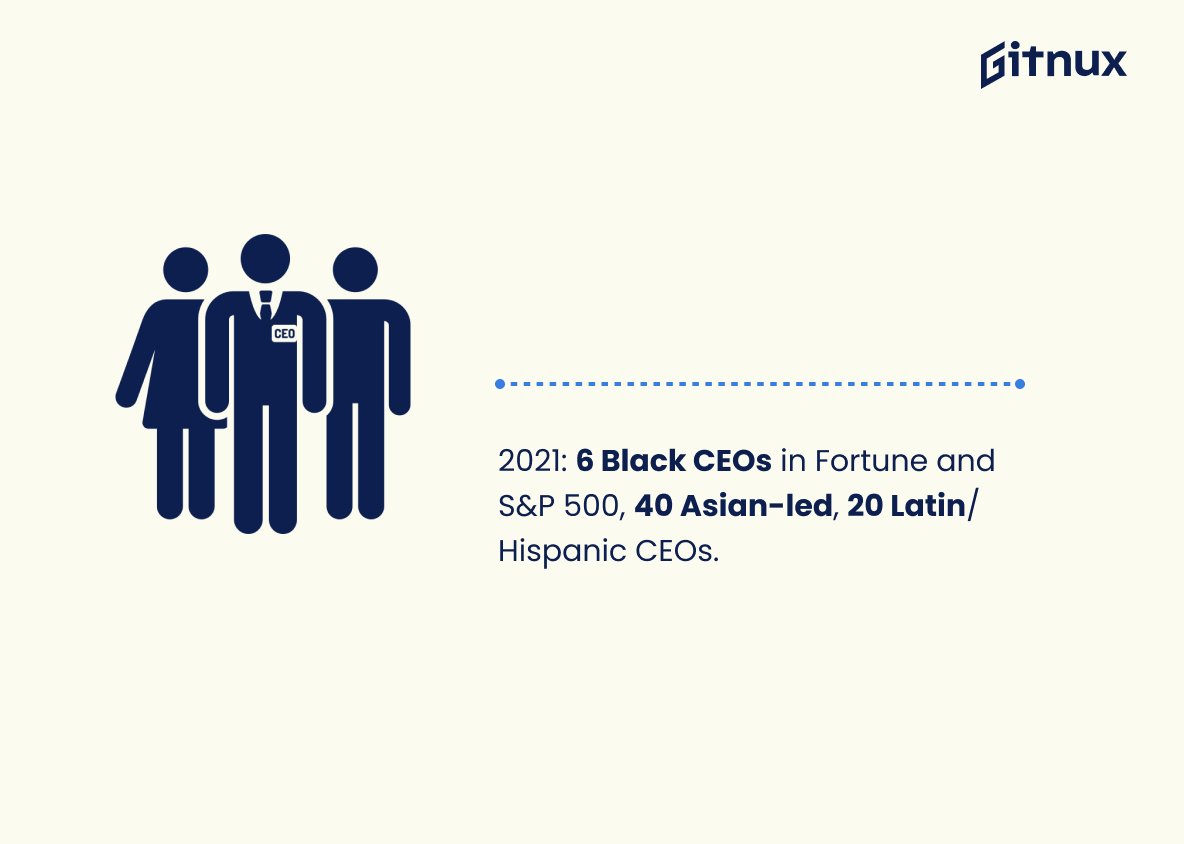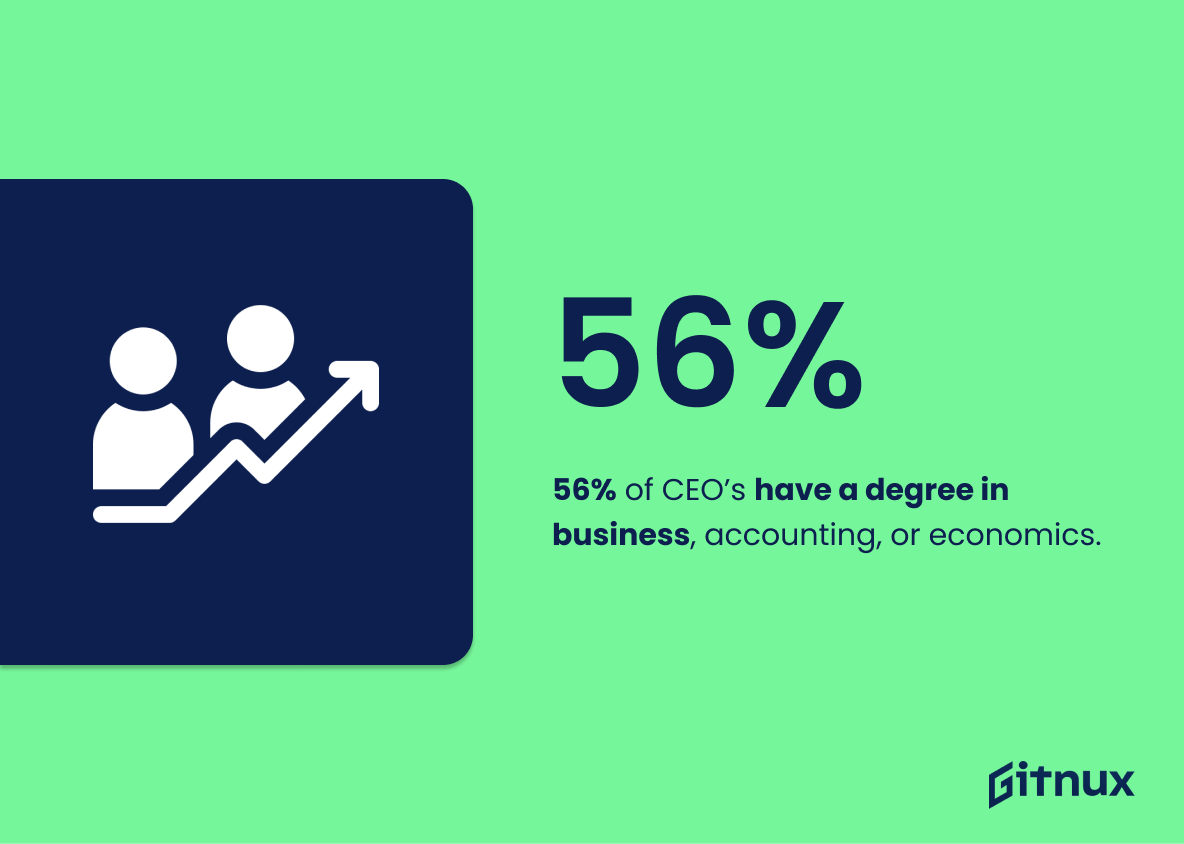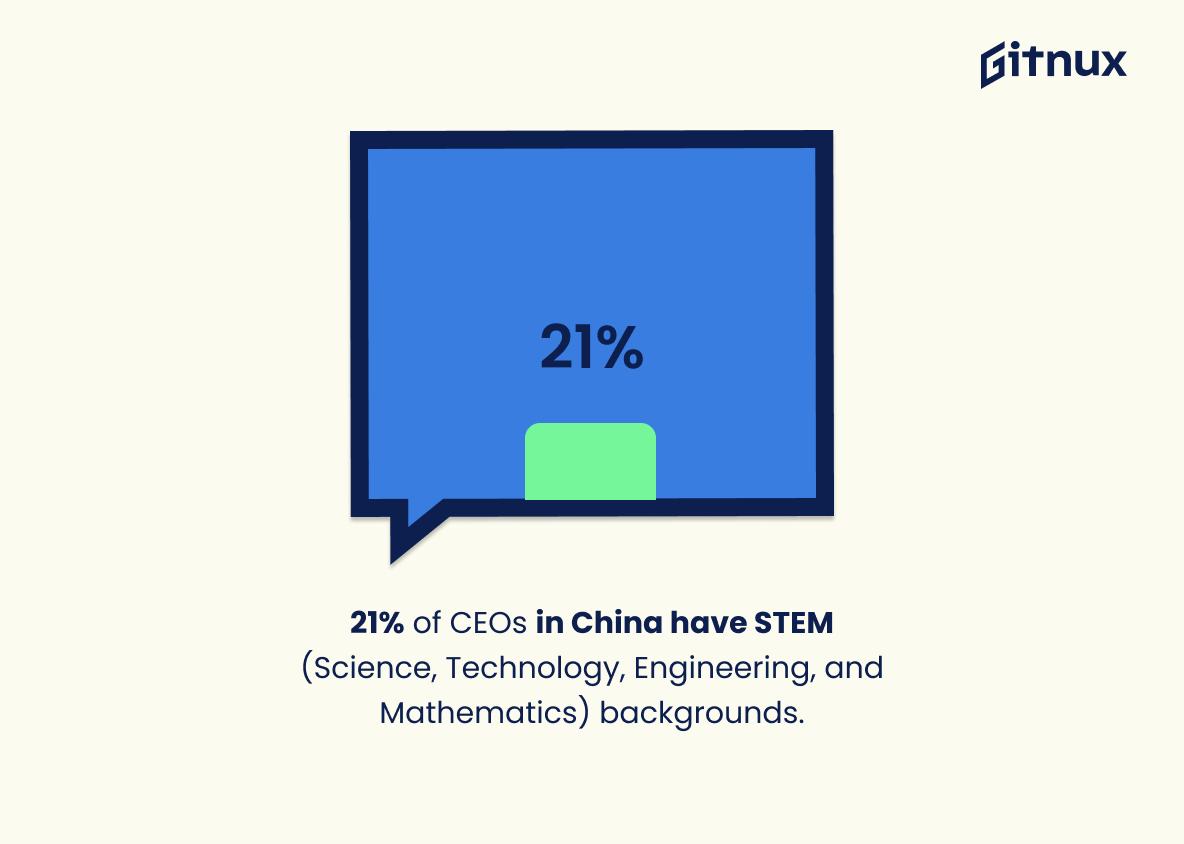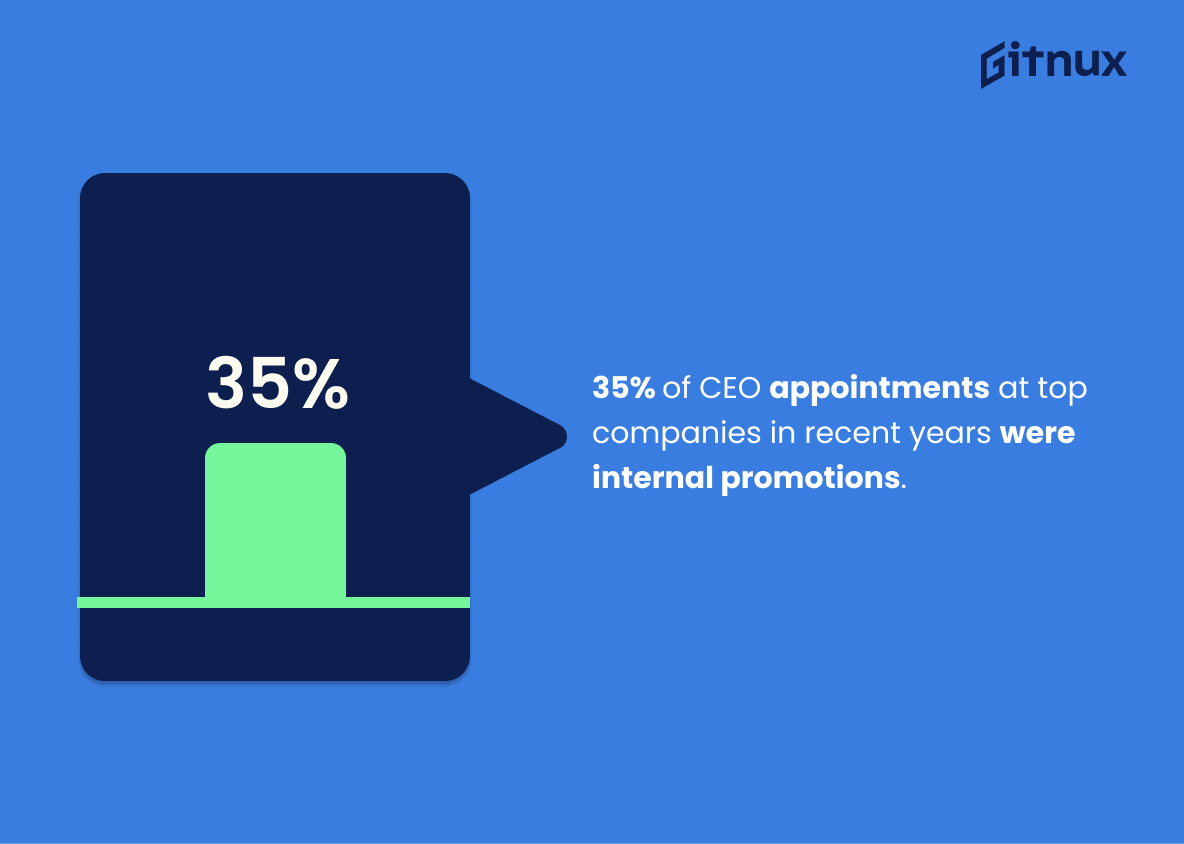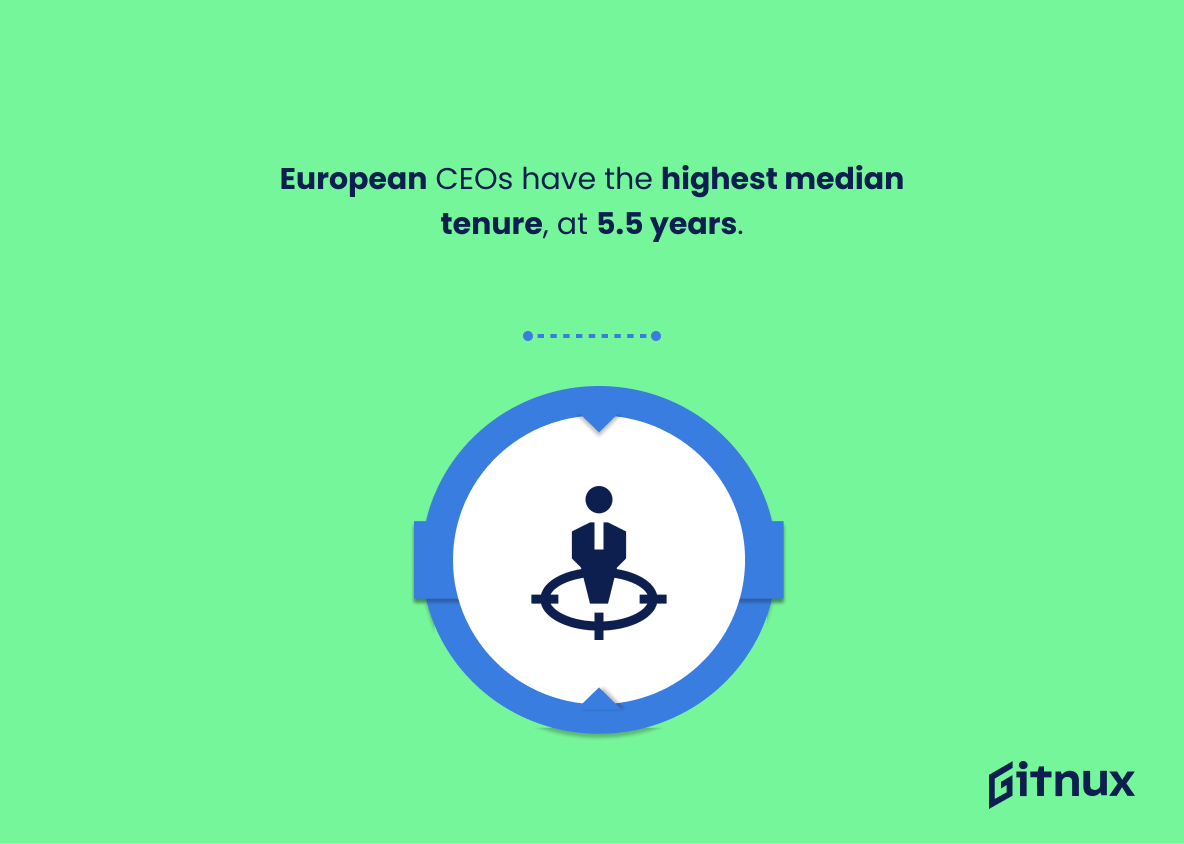The success of a company is often attributed to its CEO. But what does the background of a successful CEO look like? In this article, we’ll explore the most important CEO background statistics and what it takes to become a successful leader. We’ll look at the educational backgrounds, experience, and other qualifications of CEOs from some of the world’s most successful companies.
We’ll also discuss the importance of having a diverse background and how it can help a company reach its goals. Finally, we’ll talk about the importance of having a mentor and how it can help a CEO reach their full potential. So let’s dive in and explore the background statistics of CEOs.
CEO Background: The Most Important Statistics
Computer science was the most popular field of study for CEOs, with consulting as the most common first job.
The average age of incoming CEOs for S&P 500 companies has increased to 14 years in the last 14 years.
CEO Background: Statistics Overview
CEOs are typically highly educated, which is important for the success of a business. Having a CEO with a high level of education is important because it indicates that they have the knowledge and experience necessary to make informed decisions and lead the company in the right direction. This is especially true in the context of CEO background statistics, as it provides an indication of the qualifications and experience of the person at the helm of the company.
The average birth year of CEOs has remained around 1960 since 2005.
This statistic shows that the age of incoming CEOs has remained relatively consistent over the past 15 years, indicating that the same age group is being consistently chosen for these positions. This could be indicative of a lack of diversity in the CEO demographic, as the same age group is consistently chosen for these roles.
32% of the world’s top CEOs have studied abroad, far exceeding the general average of 6%.
This statistic is significant because it shows that studying abroad is a valuable experience for aspiring CEOs. It suggests that having international experience can be beneficial in terms of developing the skills and knowledge needed to be a successful CEO. It also highlights the importance of having a diverse background and perspective when leading a company.
Companies are becoming more diverse: This is important because it allows for more representation of different backgrounds in the workplace, which can lead to better decision-making and a more inclusive culture.
Read more about Decision-Making Skills
Asians/Indians were the most represented racial minority at the CEO level of U.S. companies.
This statistic shows that there is progress being made in terms of diversity and inclusion in the corporate world. It also indicates that companies are recognizing the value of having a diverse leadership team, which can help to create a more equitable and inclusive workplace.
Computer science was the most popular field of study for CEOs, with consulting as the most common first job.
This statistic provides insight into the educational and professional backgrounds of CEOs, which can be used to inform hiring decisions and understand the skills and experiences that are most valued in the industry.
Most CEOs tend to start in business development roles. This matters because it shows that having experience in business development is important for those aspiring to become CEOs. It also highlights the importance of having a strong business development background for those in executive roles. This can help inform the decisions of those looking to move up the corporate ladder and become CEOs.
The average age of incoming CEOs for S&P 500 companies has increased to 14 years in the last 14 years.
This fact indicates that the background of CEOs is changing. This could mean that companies are looking for more experienced candidates, or that they are looking for candidates with different skill sets. It could also indicate that the job market is becoming more competitive, as more experienced candidates are being sought after. This could have implications for how companies select their CEOs, as well as how they develop their corporate culture.
In 2013, the average age for an incoming CEO was 53, in 2022 it was 59.
This statistic shows the trend of increasing age among incoming CEOs. This is an important indicator of the overall trend in the business world, as it suggests that companies are looking for experienced and mature leaders who can help them navigate the increasingly competitive business environment. Additionally, this statistic is important because it highlights the need for businesses to focus on developing new and young leaders, as the average age for incoming CEOs is steadily increasing. This could indicate that businesses are not investing as much in developing young talent as they should be, which could be detrimental to the long-term success of the organization.
In 2021, there were six Black CEOs in Fortune and S&P 500 companies. Asians led 40 of the companies, and Latin/Hispanic CEOs led 20.
This statistic is important because it highlights the progress of diversity and inclusion in the corporate world. It shows that companies are beginning to recognize the value of having a diverse workforce at the highest levels of leadership. This can help to create a more equitable workplace, where everyone is treated with respect and given the opportunity to thrive. It can also inspire more people from diverse backgrounds to take on leadership roles and help create a more inclusive and equitable future.
98% of CEOs globally hold a bachelor’s degree.
This statistic highlights the fact that having a bachelor’s degree is often seen as a necessary qualification for success in the corporate world. Having a college degree can open up many more opportunities for career advancement and higher earnings. It also shows that a college education can be a valuable asset in the workplace, as it can provide a strong foundation of knowledge and skills.
Women hold 8% of CEO positions in Fortune 100 companies.
This statistic speaks to the level of representation of women in corporate leadership positions. Despite making up nearly half of the workforce, women hold only 8% of the top CEO positions in Fortune 100 companies. This statistic highlights the gender gap in leadership positions and the need for increased representation of women in the corporate world. It also speaks to the need for greater access to resources and support for women in business, and the need to create a more equitable and inclusive corporate environment.
Female CEOs earn about 75% of what their male counterparts receive to do the same job.
This number highlights the gender pay gap that exists in the corporate world. It shows that even when women occupy the same positions and have the same qualifications as their male counterparts, they are still not receiving the same compensation for their work. This disparity in pay can have a lasting effect on women’s earning potential over their careers, and could ultimately lead to a lack of economic security and opportunity for women in the workplace.
Supplementary Statistics
Around 40% of Fortune 500 CEOs have an MBA degree.
Having an MBA degree is a key factor in achieving success in the corporate world, and can be a major asset for those looking to climb the corporate ladder.
56% of CEO’s have a degree in business, accounting, or economics.
This provides insight into the educational backgrounds of the individuals who are leading some of the world’s most influential companies. It suggests that a majority of CEOs have a degree in a field related to business, accounting, or economics, which implies that these areas of study are important for aspiring CEOs to pursue.
21% of CEOs in China have STEM (Science, Technology, Engineering, and Mathematics) backgrounds.
This statistic is significant in the context of CEO background statistics because it highlights the importance of STEM education in the Chinese business world. It shows that having a STEM background is a valuable asset for those aspiring to become CEOs in China, and that STEM education is highly valued in the Chinese corporate landscape.
Female CEOs in the Fortune 500 list represented 6.6% in 2019.
Women are still underrepresented in the highest echelons of business, despite the strides that have been made in recent years. It is a reminder that there is still much work to be done in order to create a more equitable and diverse workplace.
35% of CEO appointments at top companies in recent years were internal promotions.
This speaks to the importance of creating a culture of growth and development within a company, where employees are encouraged to strive for excellence and take on greater responsibilities. This statistic is a powerful reminder of the importance of investing in the development of employees, and the potential rewards that come with it.
European CEOs have the highest median tenure, at 5.5 years.
This suggests that European CEOs are more likely to remain in their positions for longer periods of time, providing a sense of continuity and reliability to their organizations. This is an important factor to consider when evaluating the effectiveness of a CEO, as it indicates that they have been able to maintain their position and remain successful over a longer period of time.
CEOs who have been promoted internally usually have a tenure of 7.2 years, while externally appointed CEOs have a median tenure of 5.7 years.
CEOs who are promoted internally tend to have longer tenures, indicating that they may be better suited to the role and more successful in the long run. On the other hand, externally appointed CEOs have shorter tenures, suggesting that they may not be as well-suited to the role or as successful in the long run. This information can be used to inform decisions about CEO appointments and to better understand the impact of different backgrounds on CEO performance.
29% of UK CEOs hold an MBA degree.
A significant portion of CEOs have obtained an MBA degree, which could indicate that having an MBA is a valuable asset for those aspiring to become a CEO. Furthermore, it could also suggest that MBA programs are providing the necessary skills and knowledge to equip individuals with the tools to become successful CEOs.
35% of top-level CEOs have an undergraduate degree in engineering.
Having an engineering degree may be a beneficial factor in achieving success in the corporate world.
32% of Fortune 500 CEOs began their careers in finance or general management.
Having a strong background in these areas is essential for those aspiring to reach the highest levels of corporate leadership. Furthermore, it highlights the need for aspiring CEOs to gain experience in these areas in order to increase their chances of success.
Only 11% of CEOs studied at an Ivy League School.
The majority of CEOs studied at institutions other than Ivy League schools, suggesting that there are other paths to success in the corporate world.
57% of CEOs in professional services and technology backgrounds have no previous CEO experience.
The majority of CEOs in these fields are relatively new to the role, which could mean that the industry is undergoing a period of rapid change and growth. This could be an exciting opportunity for those looking to break into the industry, as well as a challenge for those already in the field to stay ahead of the curve. This statistic is an important piece of information for anyone interested in the professional services and technology industries, and could be a valuable insight for those looking to make a career in the field.
40% of CEOs have assumed international job assignments.
CEOs are increasingly being called upon to take on international job assignments, demonstrating the need for them to have a broad understanding of different cultures and markets. This is an important factor to consider when discussing the backgrounds of CEOs, as it highlights the importance of having a global perspective in order to be successful in the role.
96% of CEOs have a bachelor’s degree or higher.
This statistic is a powerful indicator of the importance of higher education in the corporate world. It demonstrates that having a bachelor’s degree or higher is a prerequisite for many CEOs, and that those without such qualifications may find it difficult to ascend to the highest levels of corporate leadership. This statistic is a valuable insight into the qualifications and experience necessary to become a successful CEO.
CEOs with military experience have delivered better performance than those without military experience, according to a 2016 study.
Those with military experience have the ability to lead and manage effectively, which can be beneficial for a company’s performance. This information can be used to inform hiring decisions and provide insight into the qualities that make a successful CEO.
65% of CEOs used LinkedIn as their preferred social media platform.
This is important to understand the social media habits of CEOs in order to better understand their communication strategies and how they interact with their audiences. Knowing which platform they prefer can help marketers and other professionals tailor their content to better reach and engage with CEOs.
Companies with internally promoted CEOs have achieved an annualized stock market return of 14.8% on average.
Investing in internal talent can be a lucrative decision, as these companies have achieved an impressive 14.8% annualized stock market return. This is a powerful indicator that companies should consider when making decisions about their leadership.
Conclusion
Overall, the statistics about CEO backgrounds show that the majority of CEOs come from privileged backgrounds and have access to resources that are not available to the majority of the population.
This is an issue that needs to be addressed, as it can lead to a lack of diversity in the corporate world and can create an environment where those from privileged backgrounds are more likely to succeed. It is important to create an environment where all backgrounds have an equal chance of success, and this should be a priority for businesses and organizations.
References
CreditDonkey: “23 Incredible CEO Statistics” statistics.html)”, cited February 2023. (Source)
Study.eu: “The academic backgrounds of the world’s most powerful CEOs”, cited February 2023. (Source)
CEO Today: “32% Of World’s Top CEOs Studied Abroad; 29% Have MBA”, cited February 2023. (Source)
Investopedia: “Corporate Leadership by Race”, cited February 2023. (Source)
Statista: “Share of companies in the United States with racially and ethnically diverse of CEOs from 2004 to 2022”, cited February 2023. (Source)
Harvard Law School Forum on Corporate Governance: “How Common is a Female CEO-CFO Duo?”, cited February 2023. (Source)
LinkedIn: “Here Is What It Takes to Become a CEO, According to 12,000 LinkedIn Profiles”, cited February 2023. (Source)
CNBC: “The 10 most common first jobs held by CEOs”, cited February 2023. (Source)
Marginal Revolution: “CEO ages at hire”, cited February 2023. (Source)
ZipDo, cited June 2023: Ceo Background Statistics
